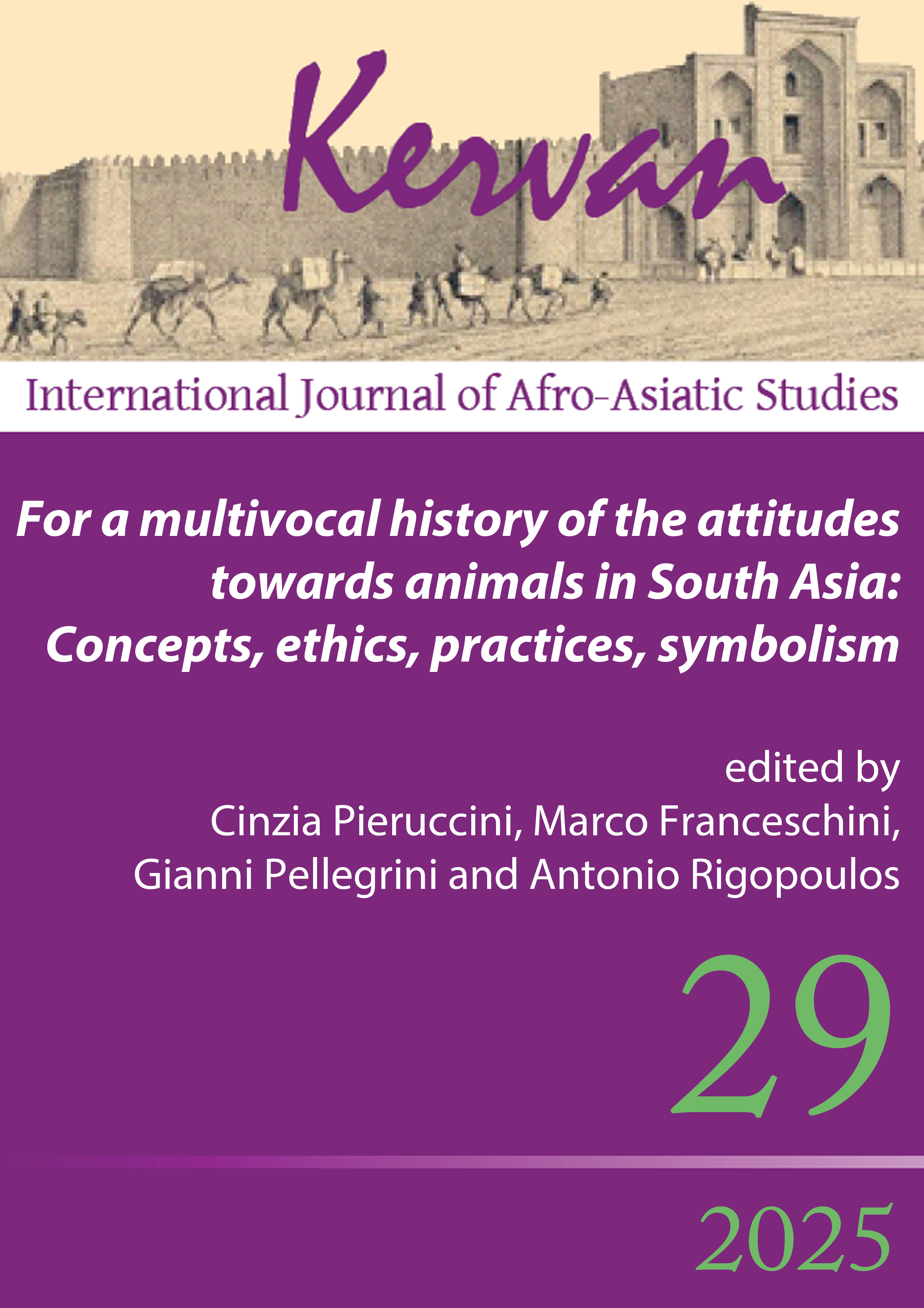Animal names in the history of the Indo-Aryan languages: Hereditary traits and innovative trends
DOI:
https://doi.org/10.13135/1825-263X/12275Abstract
Animal names represent a privileged field of research for the study of the lexicon of both ancient and modern Indo-Aryan languages. This is particularly true with regard to lexical enrichment strategies, as certain animals, occupying a prominent position in Indian culture (i.e. cow, elephant, monkey, etc.), acted as true centers of synonymic attraction. The main goal of the paper is therefore to explain one specific lexical enrichment strategy of Indo-Aryan starting by showing the difference, in this respect, between Vedic and Sanskrit and then highlighting the role of Middle Indo-Aryan in shaping the lexicon of New-Indo-Aryan. It will thus be possible to observe how alongside borrowings from the alloglot element there are other means in the inception of new words or new meanings of ancient words. Can these means be considered “areal trends” (i.e. concerning not only Indo-Aryan languages, but also Dravidian and Munda languages in particular), thus providing further evidence of South Asia as a “linguistic area”? An attempt to answer such a question will be also considered in this paper.
Downloads
Downloads
Published
Issue
Section
License
Gli autori che pubblicano su Kervan accettano le seguenti condizioni:
- Gli autori mantengono i diritti sulla loro opera e cedono alla rivista il diritto di prima pubblicazione dell'opera, contemporaneamente licenziata sotto una Licenza Creative Commons - Attribuzione che permette ad altri di condividere l'opera indicando la paternità intellettuale e la prima pubblicazione su questa rivista.
- Gli autori possono aderire ad altri accordi di licenza non esclusiva per la distribuzione della versione dell'opera pubblicata (es. depositarla in un archivio istituzionale o pubblicarla in una monografia), a patto di indicare che la prima pubblicazione è avvenuta su questa rivista.


 The articles that have appeared on Kervan since 2016 are rated as Class A in the system of National Scientific Qualification (ASN, disciplines 10/N1 and 10/N3).
The articles that have appeared on Kervan since 2016 are rated as Class A in the system of National Scientific Qualification (ASN, disciplines 10/N1 and 10/N3). The journal has been approved for inclusion in DOAJ. The DOAJ listing of the journal is available at
The journal has been approved for inclusion in DOAJ. The DOAJ listing of the journal is available at  The journal has been approved for inclusion in ERIH PLUS. The ERIH PLUS listing of the journal is available at
The journal has been approved for inclusion in ERIH PLUS. The ERIH PLUS listing of the journal is available at  Kervan was just accepted for indexing in SCOPUS. This important milestone ensures that articles published in Kervan are easily found when searching for library, archives and Information science and it enables Kervan authors to keep track of how often their article has been cited by others.
Kervan was just accepted for indexing in SCOPUS. This important milestone ensures that articles published in Kervan are easily found when searching for library, archives and Information science and it enables Kervan authors to keep track of how often their article has been cited by others.
